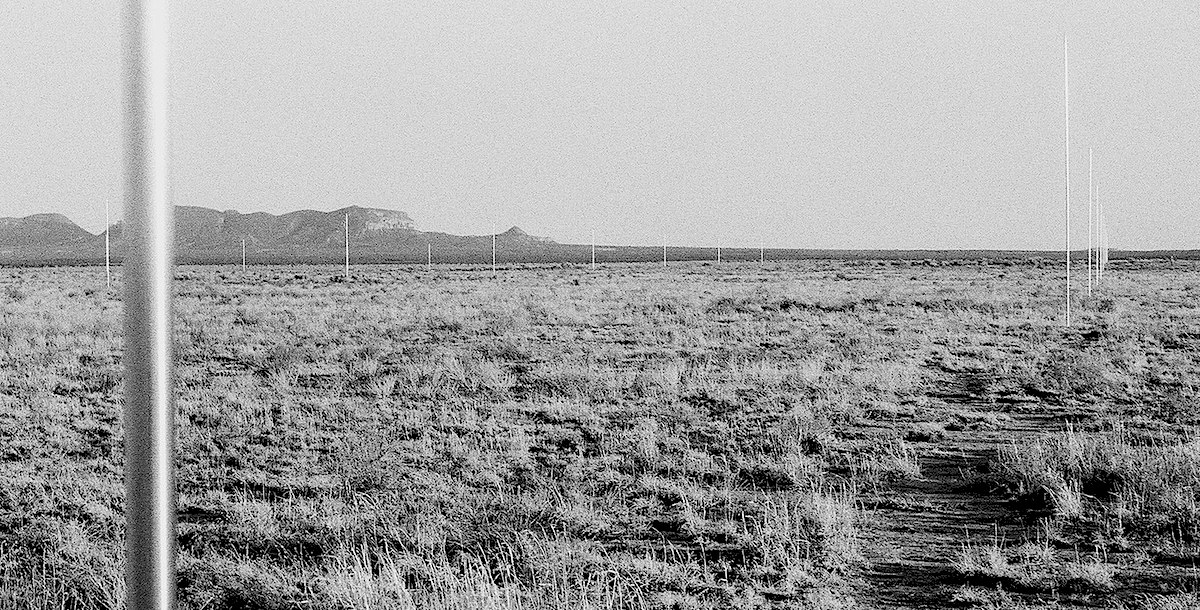Walter De Maria, who died on 13 July is regarded for his six-decade career creating Minimalist, conceptual, land art, and installation art. De Maria mined with both mathematical absolutes and elements of the sublime in his large-scale sculptures and installations.
He was born October 1, 1935, in Albany, California, near San Francisco. In 1957, he graduated from the University of California at Berkeley, where he earned his MFA in painting two years later. De Maria and his friend, the avant-garde composer La Monte Young, participated in musical and theatrical productions in the San Francisco area. His artwork always pushed the boundaries of the traditional white cube.
In 1960, De Maria moved to New York, where he wrote conceptual pieces on art, which were published in 1963 in Young’s An Anthology, and took part in multimedia presentations he terms “Theater Pieces.” In 1961, he made his first wooden box sculptures. De Maria and Robert Whitman opened the 9 Great Jones Street gallery in New York in 1963; the same year, De Maria’s first solo show of sculpture was presented there. Also in 1963, he worked as a drummer for the rock group The Primitives, which later evolved into Lou Reed’s The Velvet Underground. He continued to work in wood, began his “invisible drawings,” and composed music. With the support of collector Robert C. Scull, De Maria started making pieces in metal in 1965. In 1966, he was given a solo show at Cordier & Ekstrom, New York, and participated in Primary Structures at the Jewish Museum in New York.
De Maria emerged as a key figure of the Earthworks movement in 1968 when he filled the Galerie Heiner Friedrich in Munich with dirt. This year, he also made his Mile Long Drawing in the Mojave Desert, meant to serve as an early manifestation for his project Mile Long Parallel Walls in the Desert, originally conceived in 1962 to consist of two parallel mile-long walls. In 1968, he also participated in Documenta in Kassel. A major exhibition of De Maria’s sculpture was held at the Kunstmuseum Basel in 1972. Earthworks and serial geometric sculpture continued to occupy De Maria in the 1970s: his Three Continent Project was completed in 1972 and the Lightning Field in New Mexico was finished in 1977. That same year, De Maria again participated in Documenta, this time installing his permanent public sculpture Vertical Earth Kilometer in Friedrichsplatz Park in Kassel. Also in 1977, the artist recreated his Earth Room at the Heiner Friedrich Gallery in New York, which was then permanently reinstalled in 1980.
In 1979, De Maria meticulously arranged five hundred brass rods for The Broken Kilometer, a permanent installation at 393 West Broadway in New York. Similar experiments with geometry and mathematical formulae in metal floor pieces include The Equal Area Series (1976–1990), 360° I-Ching/64 Sculptures (1981), A Computer Which Will Solve Every Problem in the World/3-12 Polygon (1984), and 13, 14, & 15 Meter Rows (1985). For The 2000 Sculpture (1992), exhibited at Kunsthaus Zürich in 1992 and again in 1999, De Maria incorporated polygonal shapes made of solid gesso, rather than his characteristic brass or steel, into his expansive, perfectly ordered installations.
While De Maria is perhaps best known for his Earthworks and installations in the seventies, he has also since been the subject of numerous solo exhibitions organized by Centre Georges Pompidou in Paris (1981), Museum Boymans-van Beuningen in Rotterdam (1984), Staatsgalerie in Stuttgart (1987), Moderna Museet in Stockholm (1988), Gemäldgalerie in Berlin (1998), Chichu Art Museum in Naoshima (2000 and 2004), and Nelson-Atkins Museum of Art in Kansas City (2007), among others. The artist passed away on July 25th, 2013, in New York.
The Lightning Field (1977), by the American sculptor Walter De Maria, is a work of Land Art situated in a remote area of the high desert of western New Mexico. It is comprised of 400 polished stainless steel poles installed in a grid array measuring one mile by one kilometer. The poles — two inches in diameter and averaging 20 feet and 7½ inches in height — are spaced 220 feet apart and have solid pointed tips that define a horizontal plane. A sculpture to be walked in as well as viewed, The Lightning Field is intended to be experienced over an extended period of time. A full experience of The Lightning Field does not depend upon the occurrence of lightning, and visitors are encouraged to spend as much time as possible in the field, especially during sunset and sunrise. In order to provide this opportunity, Dia offers overnight visits during the months of May through October.
Photo: Walter de Maria, The Lightning Field, 1977 Licence by Retis

